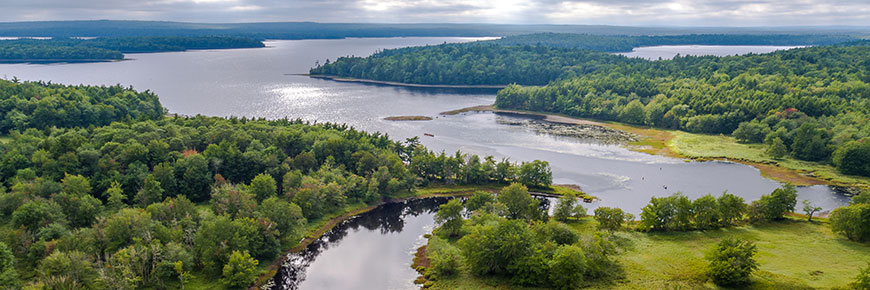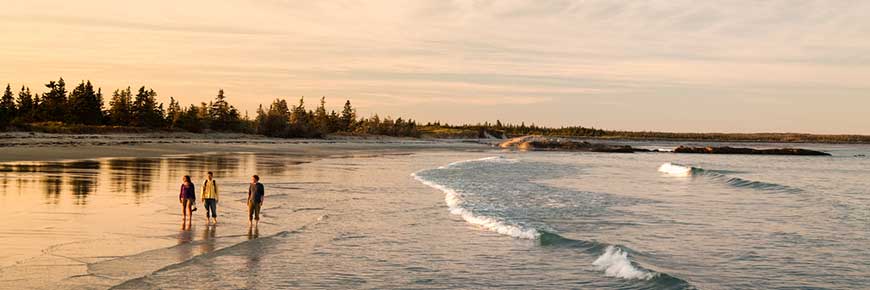
Stewardship and management
Kejimkujik National Park and National Historic Site
Job opportunities in Nova Scotia
Jobs and careers with Parks Canada in Mainland Nova Scotia, Canada.
Partners
Parks Canada partners: Friends of Keji, Royal Astronomy Society of Canada, and Nova Scotia College of Art and Design University.
Permits and licenses
Visitors who wish to undertake a film or photo shoot may require a film permit or business license.
Plans and policies
Management plan, Firewood management.
Contact
Contact Parks Canada staff by phone, email, mail, or street address.
Kejimkujik National Park and National Historic Site protects 405 square kilometres of diverse habitat within Nova Scotia’s South Shore Region—two distinct and separate natural regions given cultural context by longstanding Mi'kmaw heritage.
The largest region, also a Dark-Sky Preserve, stewards 381 square kilometres of inland freshwater habitat—lakes, rivers, bogs and floodplains—and mixed Acadian woodland home to 178 species of birds as well as plentiful mammals, reptiles and amphibians.
Kejimkujik Seaside, 93 kilometres away on the Atlantic coast, is the park’s 24 square kilometre oceanside region. Here, colourful coastal barrens lead to bogs of pitcher plants and sundew and on to rugged capes, cobblestones, white-sand beaches and rocky islets spotted with seals.
Adding to its natural heritage, Kejimkujik also tells a human story. Mi’kmaw traditions come alive through petroglyphs, heritage artefacts and Indigenous interpreters who illuminate the landscape and sky-scape with folklore four millennia deep.
Ecosystem management

Ecosystems have integrity when they have their native components intact, including:
- abiotic components (the physical elements, e.g. water, rocks),
- biodiversity (the composition and abundance of species and communities in an ecosystem, e.g. tundra, rainforest and grasslands represent landscape diversity; black bears, brook trout and black spruce represent species diversity) and,
- ecosystem processes (the engines that makes ecosystem work; e.g. fire, flooding, predation). Kejimkujik ecosystems include forest ecosystems, wetland ecosystems, freshwater ecosystems and coastal ecosystems.
Parks Canada's objective is to allow people to enjoy national parks as special places without damaging their integrity. In other words, ecological integrity is our endpoint for park management; ecosystem management is the process used to get there.
Learn more: Conservation and restoration.
Firewood management

Parks Canada is a leader in resource conservation and one of our primary interests is to maintain the ecological integrity of this National Park and National Historic Site.
Parks Canada is working closely with a task group including the Canadian Food Inspection Agency, Nova Scotia Department of Natural Resources, the Canadian Forest Service, and other research and land management organizations. Parks Canada has determined that a firewood importation ban is the best option for mitigating the spread of Hemlock Woolly Adelgid and protecting Kejimkujik’s forests.
Learn more: Firewood management.
Management planning

Parks Canada Agency prepares management plans to ensure that decisions affecting its protected heritage places are consistent with its mandate and policies. The management planning process is one of Parks Canada's best opportunities to engage Canadians at a strategic level and provides Indigenous Peoples, partners, visitors, and other interested parties a meaningful opportunity to be involved in setting priorities for protected heritage places that the Agency administers.
Management plans are Parks Canada's primary public accountability documents and are approved by the Minister responsible for the Agency and tabled in Parliament. Plans include a long-term vision and strategic goals and actions to achieve objectives.
Learn more: Management planning.
- Date modified :